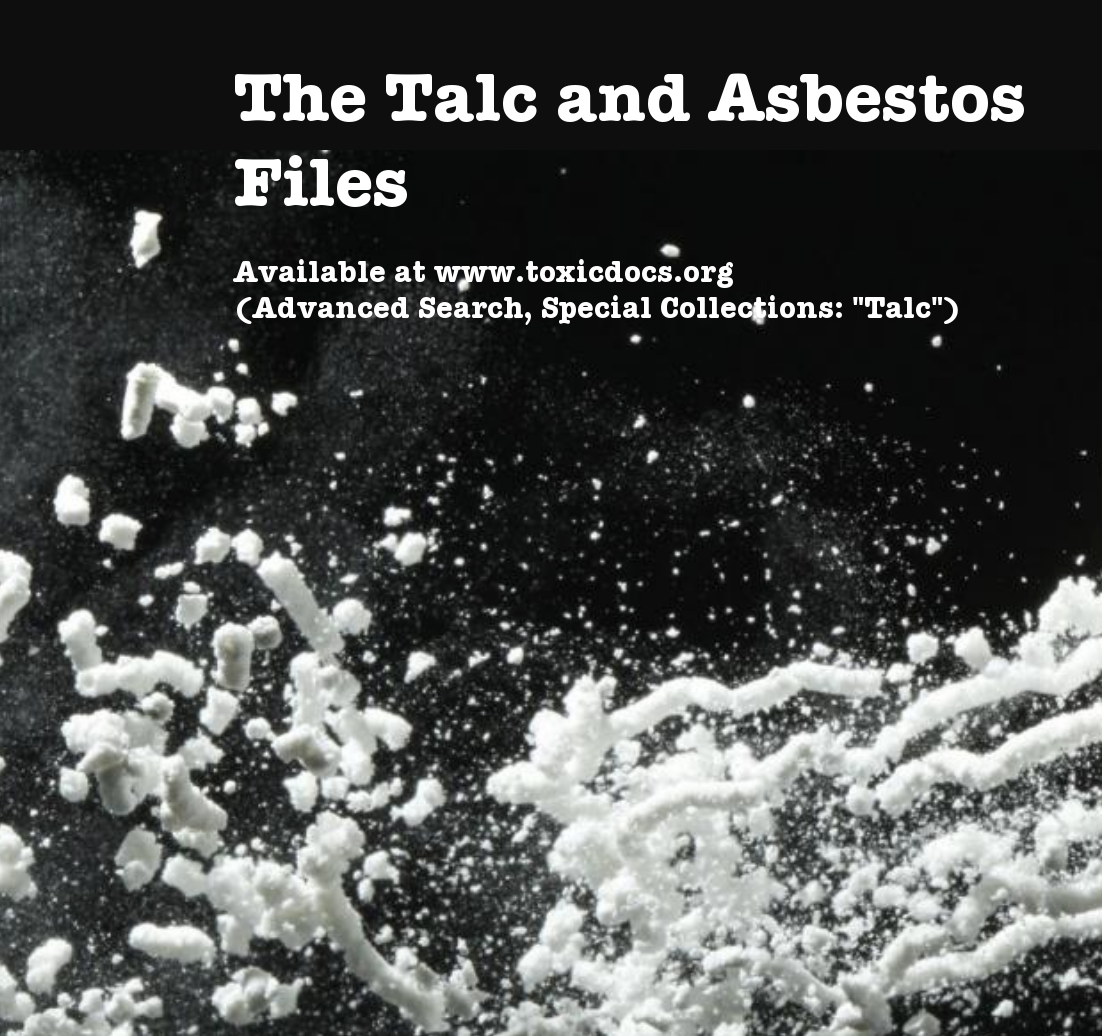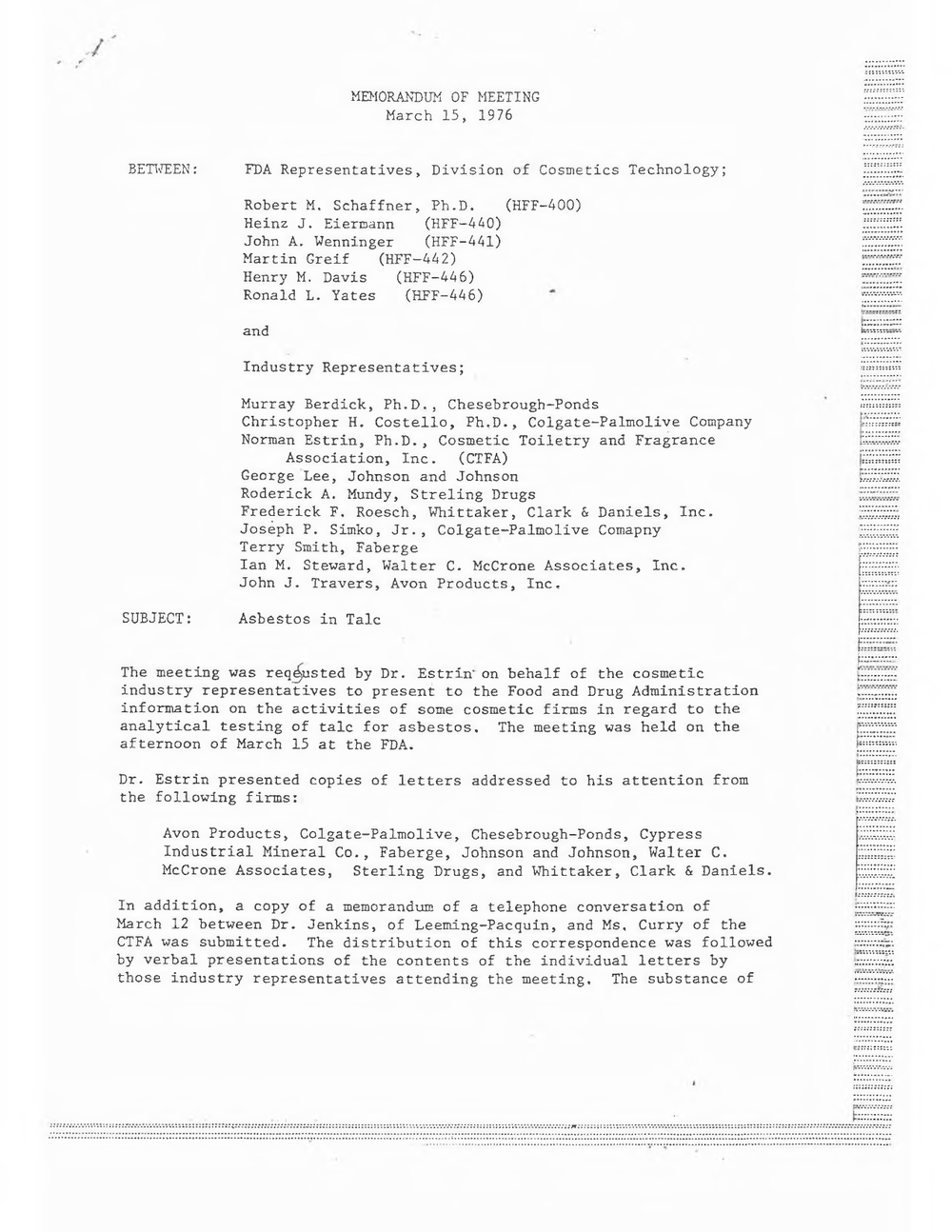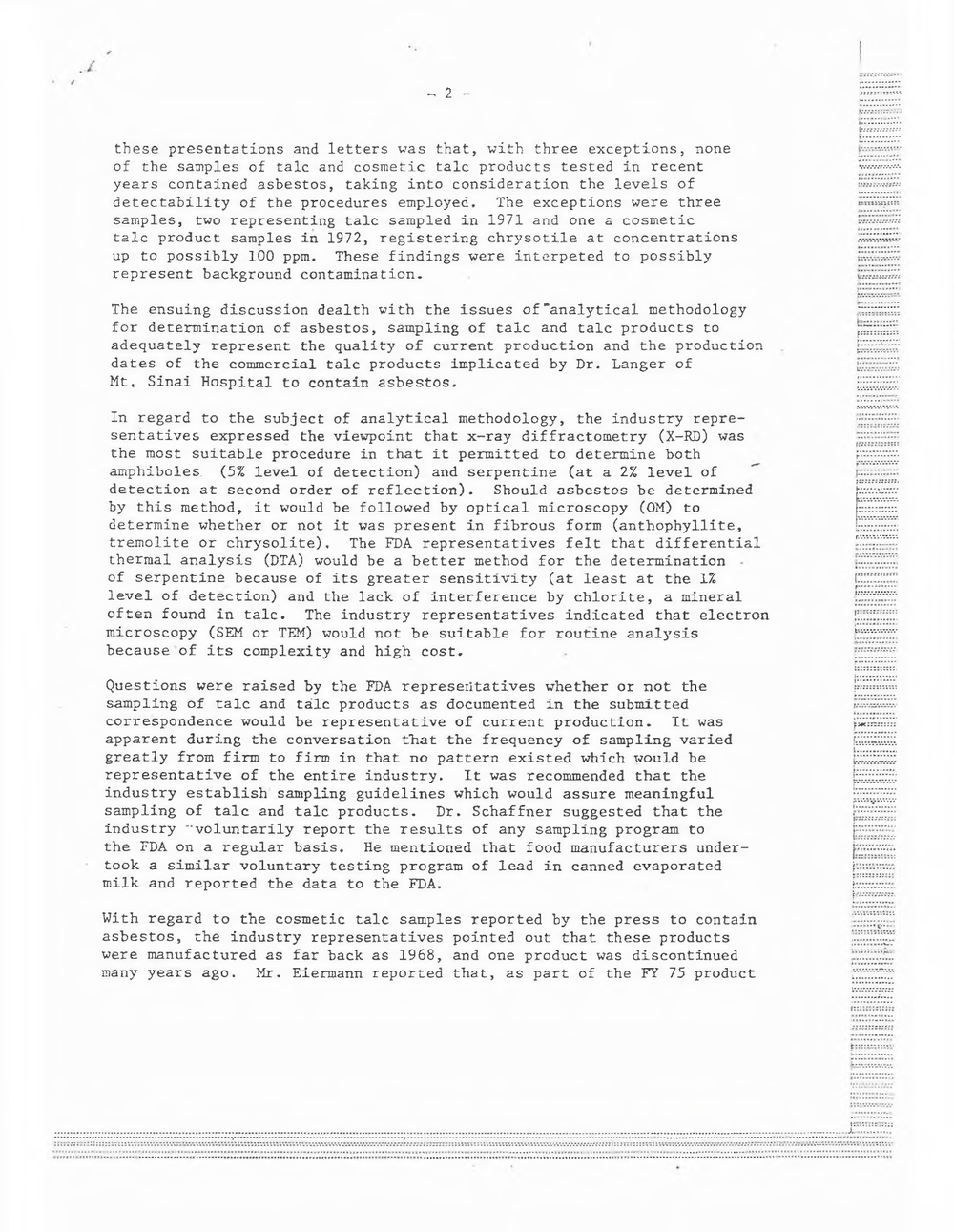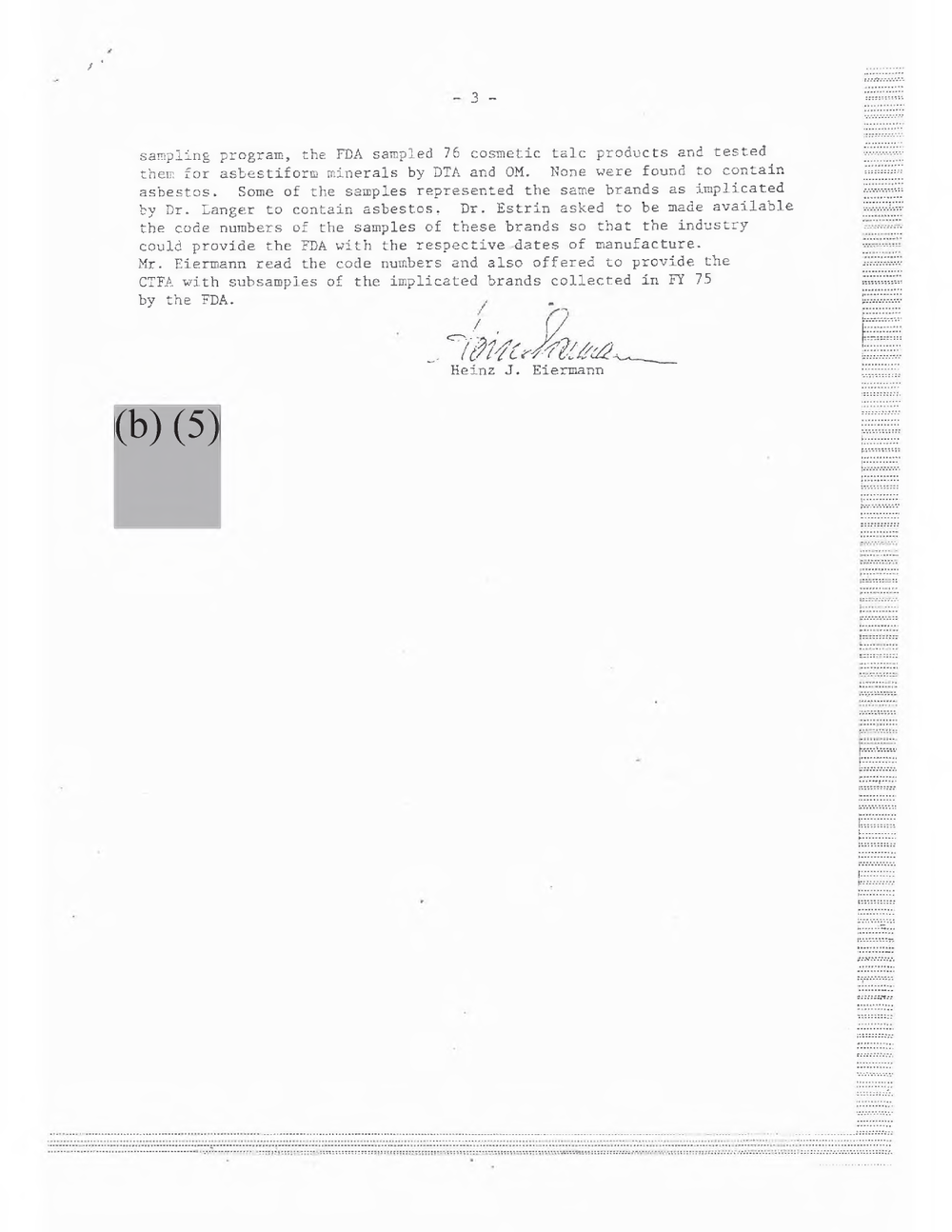Asbestos in Talc: The View from History

Last month, a jury handed down a huge $4.6 billion verdict against Johnson & Johnson, finding it liable for ovarian cancer that plaintiffs claim was associated with asbestos in talc.
Most people who read the story were puzzled over talc and asbestos appearing in the same sentence.
But questions about the toxicity of talc and presence of asbestos in talc products -- and which ones and how much -- are decades old. Over the next few weeks, we'll be adding a huge cache of never-before-seen documents on asbestos and talc.
These materials will show you the debate over safety from multiple perspectives -- regulators, toxicologists, corporate representatives, and advocates -- that'll help you situate the current case in a longer historical context.
Here's an example of one such document.
It details a 1976 meeting with industry executives from companies (Johnson & Johnson, Colgate-Palmolive) and the FDA about the presence of asbestos in calc. In the meeting, industry representatives contended that "samples of talc and comestic products tested in recent years" did not contain asbestos. The FDA countered by questioning the thoroughness of the sampling and the techniques used to assess the danger.
Besides its usefulness in the understanding the talc-asbestos debates, the document also helps situate the issue within larger landscape of toxic substances regulation in the 1970s.
At the meeting, one FDA representative suggested to the industry that it communicate "the results of any sampling program to the FDA on a regular basis," drawing parallels to "a similar voluntary testing program of lead in canned evaporated milk."
Toxic Docs contains the world's largest collections of documents on both lead and asbestos (and talc). We'll be showcasing new additions here in the coming weeks.



